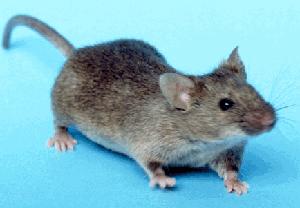Old World rats and mice facts for kids
Quick facts for kids MurinaeTemporal range: Middle Miocene – Recent
|
|
|---|---|
 |
|
| Mus musculus, the House Mouse | |
| Scientific classification | |
| Kingdom: | |
| Phylum: | |
| Class: | |
| Order: | |
| Superfamily: | |
| Family: | |
| Subfamily: |
Murinae
Illiger, 1811
|
The Old World rats and mice are a big group of animals. They are also known as Murinae. They belong to the Muridae family, which includes many types of rats and mice. There are about 560 different kinds of Murinae! This group is one of the largest among all mammals.
Contents
Where Murinae Live
Murinae animals originally come from Africa, Europe, Asia, and Australia. They are special because they are the only land-living mammals that are naturally found in Australia.
Sadly, these animals have also been carried by humans to almost every other continent, except Antarctica. When they arrive in new places, they can cause big problems. They are often seen as pests. On islands, they have sometimes caused native animals to become endangered or even extinct.
Important Lab Animals
Two well-known Murinae, the brown rat and the house mouse, have become very important. They are often used as laboratory animals for medical tests. Scientists use them to learn more about diseases and how medicines work.
These two animals are so important that their full genome (all their genetic information) has been mapped out. This helps scientists understand them even better.
Unique Teeth
Murinae have a special kind of molar tooth pattern. Most rodents in their larger group (called Muroidea) have two rows of bumps on their molars. But Murinae have three rows of these bumps, which makes their teeth unique.
Ancient Murinae: Fossils
The oldest known Murinae fossils are about 14 million years old. These ancient relatives include a genus called Antemus. Scientists believe that Progonomys was an ancestor of today's Mus (which includes house mice). Another ancient genus, Karnimata, is thought to be an ancestor of Rattus (which includes many types of rats).
These important fossils were found in the Siwalik fossil beds in Pakistan. This area has very well-preserved fossils that help us understand the history of these animals.
How Scientists Classify Murinae
Scientists are still learning a lot about the many different kinds of Murinae. It's a very diverse group! Some groups have been studied more, like the water rats in Australia or certain mice in Southeast Asia.
Originally, three genera (Uranomys, Lophuromys, and Acomys) were thought to be Murinae. But later, using modern genetic tests, scientists found that these animals are actually more closely related to gerbils. Because of this, they were moved to a new group called Deomyinae. This shows how new discoveries can change our understanding of animal families!
See also
 In Spanish: Murinos para niños
In Spanish: Murinos para niños

